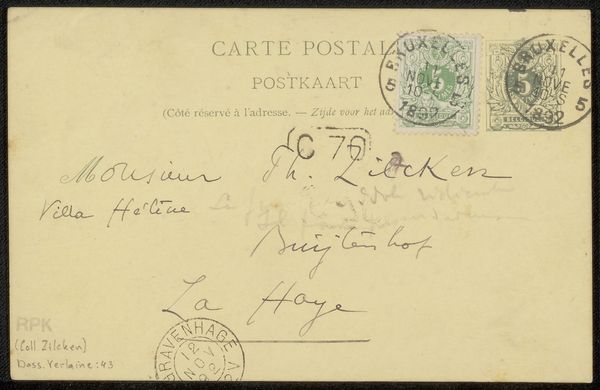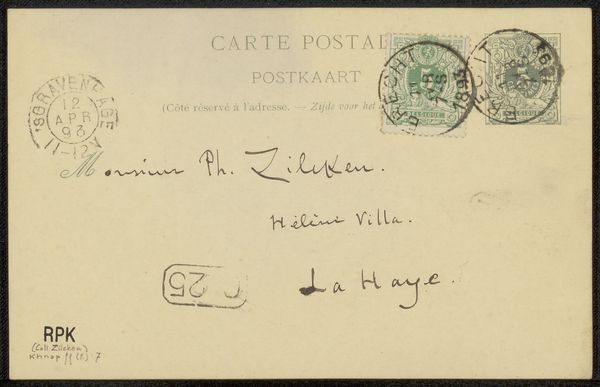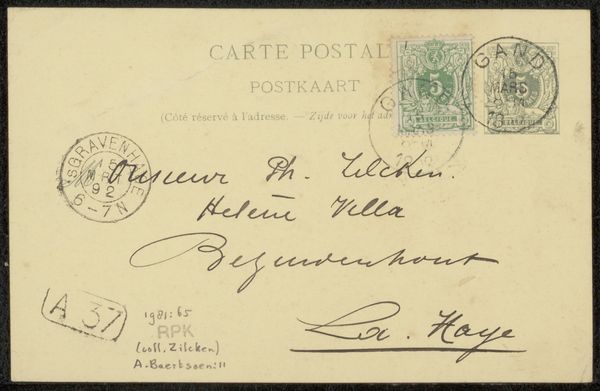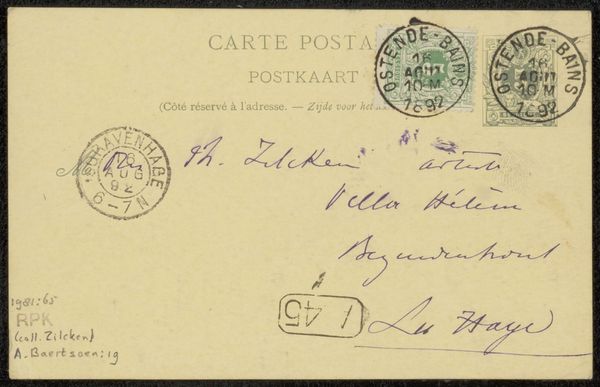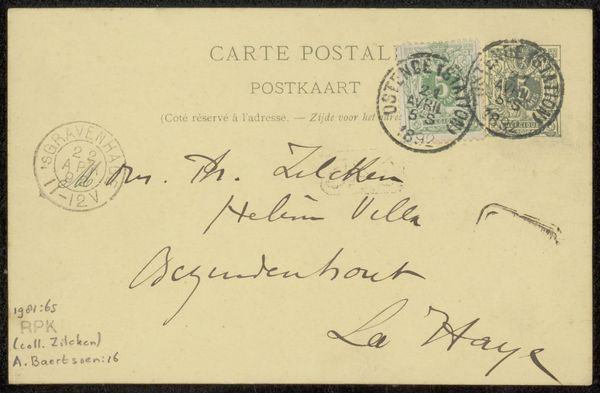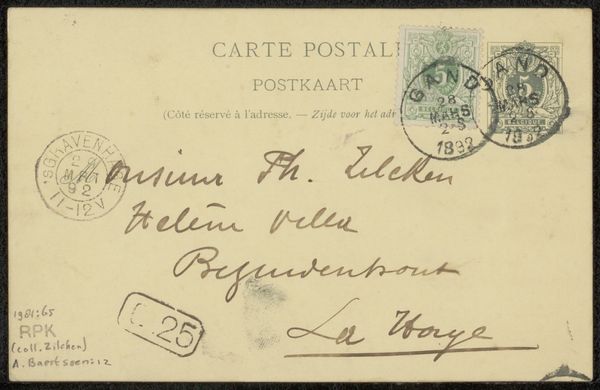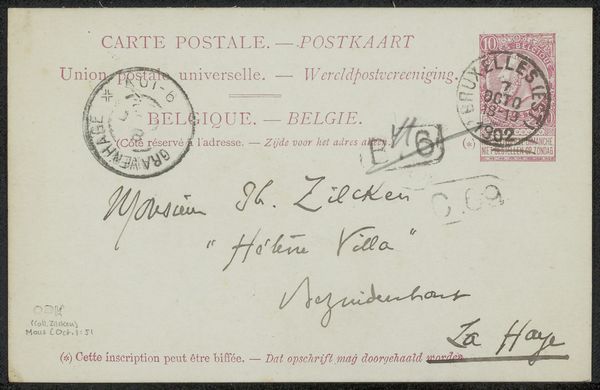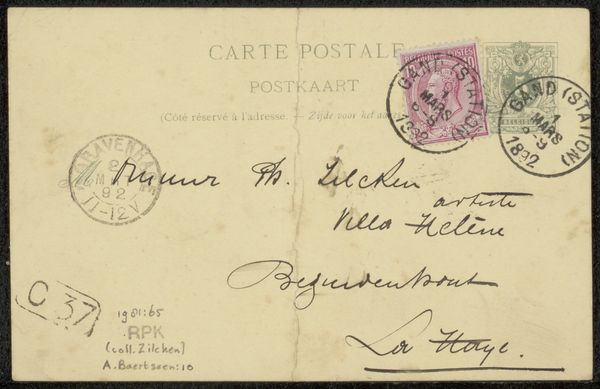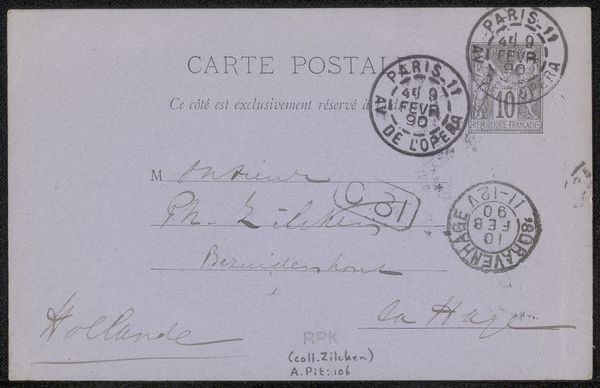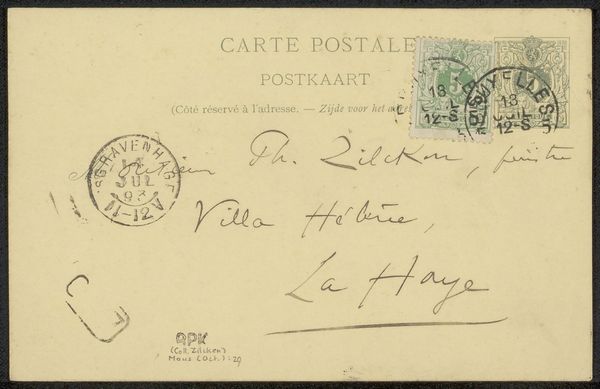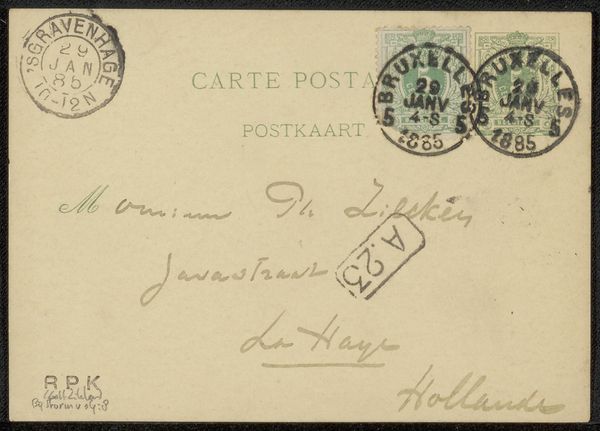
drawing, paper, pen
#
drawing
#
hand-lettering
#
pen illustration
#
old engraving style
#
hand drawn type
#
hand lettering
#
paper
#
personal sketchbook
#
hand-drawn typeface
#
pen-ink sketch
#
pen work
#
sketchbook drawing
#
pen
#
calligraphy
Copyright: Rijks Museum: Open Domain
Curator: Here we have "Briefkaart aan Philip Zilcken," a pre-1902 pen drawing on paper, likely a personal correspondence. The artist is Octave Maus. It gives such an immediate impression of faded elegance. Editor: Indeed. There's a tactile quality implied, seeing the handwriting and the stamps – it brings forth a sense of material and labor. Were these mass produced postcards of the day or individually crafted, and what sort of artisanal work went into the script and images? Curator: It’s intriguing. Maus was, of course, a very prominent figure in the Belgian art scene. Considering his position as a critic and advocate, this card, although seemingly personal, becomes a social document, providing a view into his relationships and communications within his artistic circle. Editor: Precisely. This isn't just ink on paper; it's about access and networks. Who was Philip Zilcken, and what was their relationship? How did Maus's privileged position influence the availability of materials, the time for leisurely correspondence and the potential reach of his artistic ideas through this network? Curator: Zilcken was another artist of the time. It highlights the intersection between the personal and professional in the art world. The postcard, in itself a new form of communication at the time, allowed for brief yet public proclamations or exchanges of views. Editor: That's it. What were the established social systems that defined what Maus wrote? Examining the type and handwriting could reveal insights on how the message was crafted not just by an artist but a person within societal restraints. Curator: It also shows us the public life of art, since it shows how such personal pieces can become cultural artifacts, entering the realm of collections and museums, isn't it ironic. Editor: Exactly. Its presence here re-contextualizes and potentially reframes his contribution to contemporary debates. I wonder about its place as it stands now as part of the overall economics of art and legacy. Curator: Definitely a powerful reminder that even simple correspondence has the capacity to echo far beyond its initial intent. Editor: It makes you consider the power dynamics embedded in this one simple, delicate, material object and who has the privilege to own it.
Comments
No comments
Be the first to comment and join the conversation on the ultimate creative platform.
